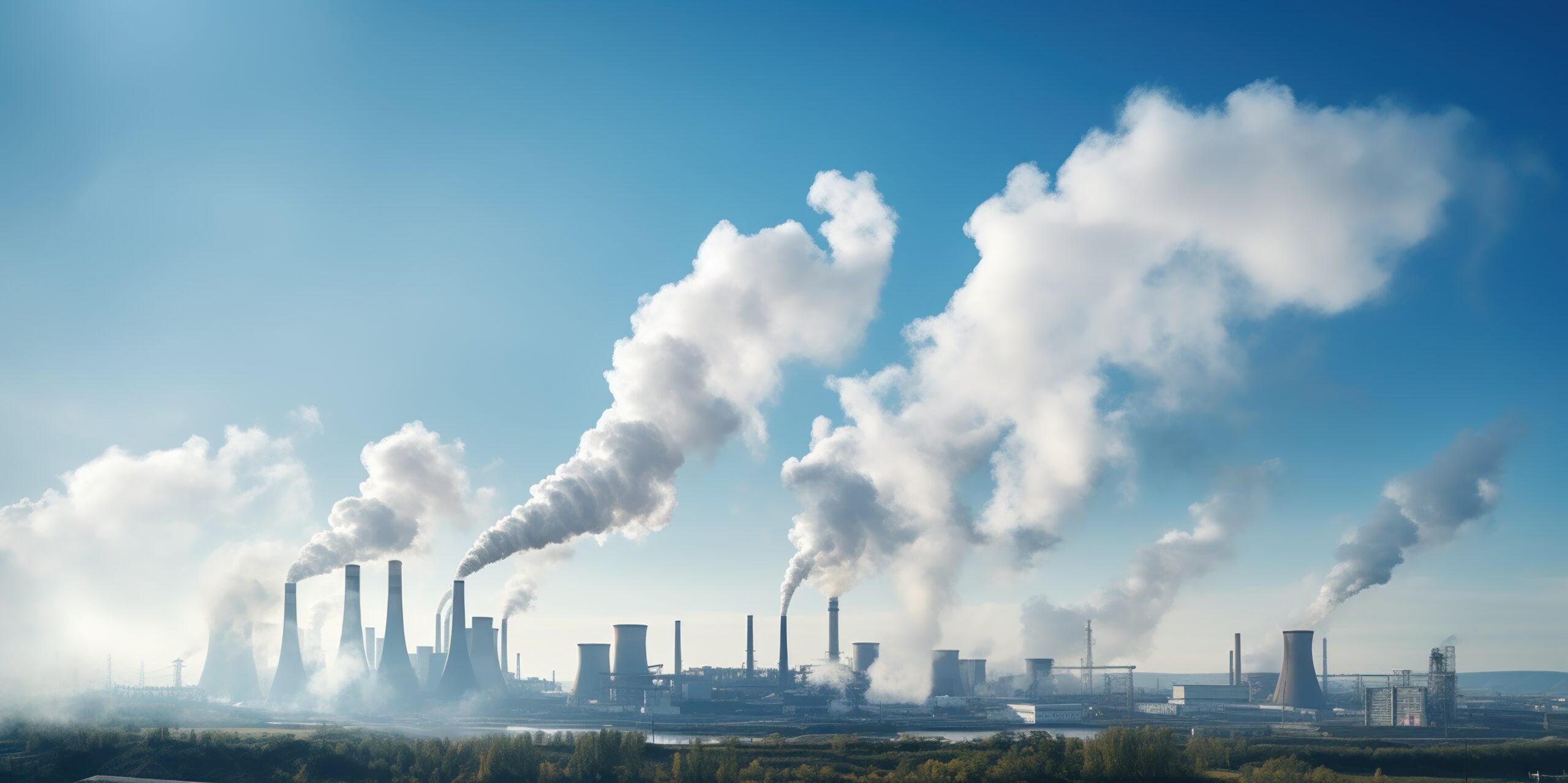The role of carbon capture and storage in decarbonising industry

CO2 capture and storage: a crucial lever for decarbonising industry
Carbon Capture and Storage (CCS) has become a central element of global climate strategies. CCS makes it possible to capture the CO2 emitted by heavy industries that use fossil fuels, before transporting it and storing it safely in deep geological formations. On a global scale, CCS could theoretically reduce CO2 emissions by around 15% to meet the climate targets set out in the Paris Agreement [1]. In the EU, the target is to capture 280 million tonnes of CO2 per year by 2040 and 450 million tonnes by 2050 Le captage et stockage du dioxyde de carbone (CO2) (CCS, pour Carbon Capture and Storage). However, the technology, while effective, still faces a number of challenges.
The role of CCS in the EU’s climate objectives
The European Union has set itself the goal of achieving carbon neutrality by 2050 [3], and CCS is one of the ways in which this can be achieved. The heavy industry sector, which accounts for a large proportion of global industrial emissions, cannot be entirely decarbonised through the electrification of processes or the use of green hydrogen. Residual CO2 emissions, which are difficult to eliminate, can be treated using CCS technologies. For example, in 2021, the cement industry produced around 2.2 billion tonnes of CO2 worldwide[4], an emission that is difficult to offset with alternative solutions.
Pre- and post-combustion capture: Techniques and challenges
Pre-combustion and post-combustion capture are two of the main methods used to capture CO2. Pre-combustion capture, used mainly in plants producing hydrogen or synthesis gas, can extract up to 90% of the CO2 produced before combustion. However, this technology is expensive and requires a specific infrastructure. For example, the Porthos project[5] in the Netherlands is a European initiative that aims to capture CO2 from the Rotterdam refinery and other nearby industrial sites, before transporting and storing it under the North Sea. The project, estimated to cost €2 billion, could capture between 2 and 5 million tonnes of CO2 a year, making a significant contribution to the decarbonisation of European industry. Post-combustion capture, which is more common, is used in conventional installations such as thermal power stations. In this approach, the CO2 is captured directly from the flue gases. Although effective, this method can be energy-intensive, requiring between 20% and 30% of the plant’s energy production to separate and compress the CO2.
Liquefaction and transport of captured CO2
Once captured, the CO2 must be transported to storage sites. To do this, it is often liquefied, as this technique significantly reduces its volume. Much of the captured CO2 is transported by pipeline. However, pipeline transport presents challenges: CO2 pipelines have to be built specifically to withstand high pressures, to minimise the risk of accidents. Maritime transport is an alternative for isolated geographical areas, and there are projects to connect industrial sites to subsea storage. The Northern Lights project, developed in Norway by Equinor, Shell and TotalEnergies, is an emblematic example of this approach. It involves the maritime transport of liquefied CO₂ from European industrial sites to an undersea geological storage site in the North Sea. Its first phase, will store 1.5 million tonnes of CO₂/year, with a capacity that could eventually reach 5 Mt/year.
Technical issues and societal perceptions of CO2 storage
Geological storage of CO₂ is the final stage in the process. It can be carried out in various types of geological formations, such as sedimentary basins, salt formations, depleted gas fields, or by mineralisation in basalt. Several storage sites exist and/or are under development. The world’s largest CO₂ storage project is Sleipner, located in the North Sea, which has stored around 20 million tonnes of CO₂ since 1996 [6]. However, the societal perception of CO₂ storage is still marked by fears, and various storage site projects have been abandoned following local protests. The prospect of storing thousands of tonnes of CO₂ underground raises concerns about the risk of leakage and long-term impacts. Monitoring activities (ex-ante, when the storage site is selected, and ex-post, until the site is closed and post-operated) and predictive modelling must ensure that all safety guarantees are met (in particular the presence of an impermeable cover rock and the geological stability of the area).
Societal, technical and political obstacles to large-scale CCS deployment
One of the main obstacles to large-scale CCS deployment is its high cost. CO₂ capture often represents between 60% and 70% of the total cost of a CCS project, with estimates varying depending on the technology and the site. For example, the cost of capture for a conventional thermal power plant could be around €50 to €100/tonne of CO₂ captured, and even €80 to €120/tonne for a cement plant. What’s more, the transport and storage infrastructures also represent considerable investment. Although mechanisms such as the Carbon Credit Market have been put in place, there is still no stable, incentive-based financial framework for meeting these costs. The issue of societal perception is also fundamental: if technology is perceived as a palliative to reducing emissions, rather than as a complementary solution, this can slow down investment and public commitment. In France, a report on the state of play and prospects for the deployment of CCUS was published by the Ministry of the Economy in July 2024[7]. The Commission de Régulation de l’Energie (CRE) has set up a working group to study the challenges of CCUS deployment[8]. 11 recommendations were made during the year, including building and promoting the social acceptability of projects, planning and deploying CCUS chains nationwide, introducing flexible regulation of CCUS value chains, supporting the investment needed to deploy CCUS chains and anticipating the economic and technical risks associated with CCUS deployment.
[1] https://www.iea.org/reports/ccus-in-clean-energy-transitions/ccus-in-the-transition-to-net-zero-emissions
[2] https://lejournal.cnrs.fr/articles/co2-faut-il-capter-pour-decarboner
[3] https://climate.ec.europa.eu/eu-action/climate-strategies-targets/2050-long-term-strategy_en
[4] https://lactualite.com/actualites/ciment-les-emissions-de-co2-ont-double-en-20-ans/
[5] https://www.porthosco2.nl/en/first-co2-storage-project-in-the-netherlands-is-launched/?utm_source=chatgpt.com
[6] https://www.equinor.com/news/20240404-reducing-emissions-from-sleipner-and-gudrun
[7] https://www.entreprises.gouv.fr/files/files/Actualites/2024/etat-des-lieux-et-perspectives-de-deploiement-du-ccus-en-france.pdf
[8] https://www.cre.fr/actualites/toute-lactualite/la-cre-publie-son-rapport-de-prospective-sur-le-captage-le-transport-le-stockage-et-la-valorisation-du-co2.html
More news News


